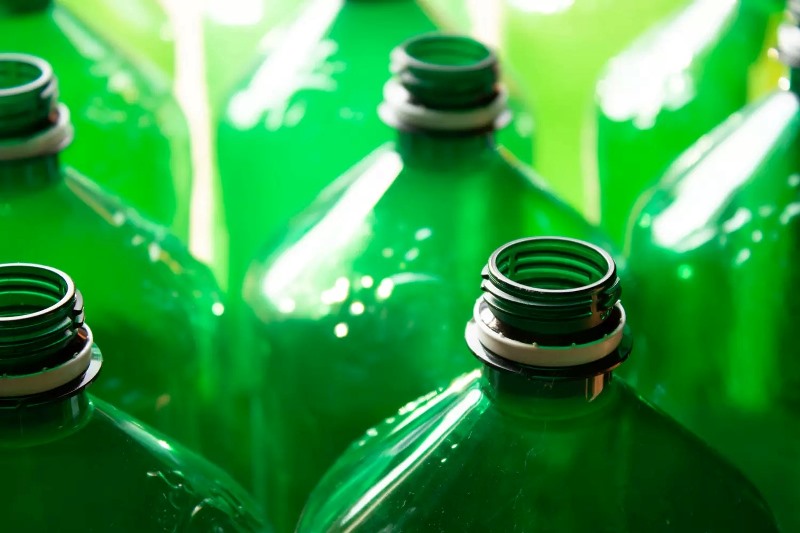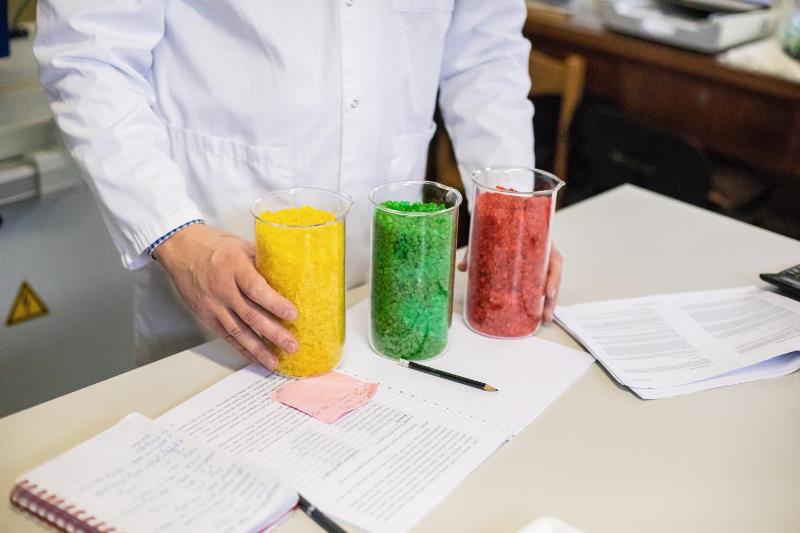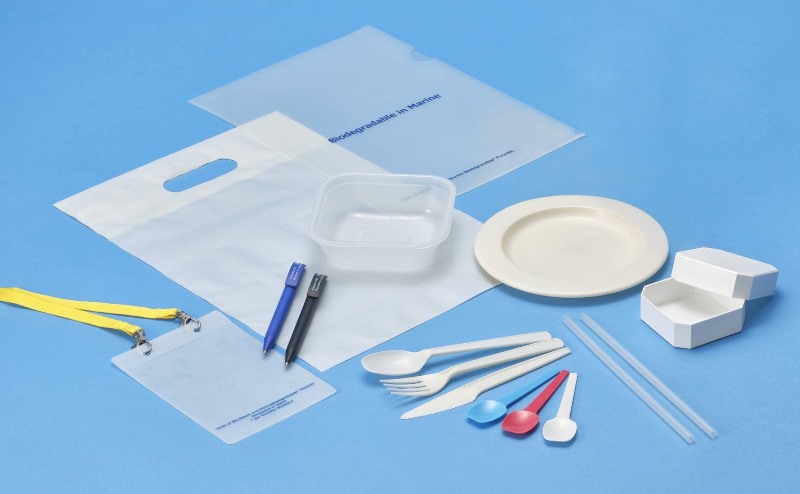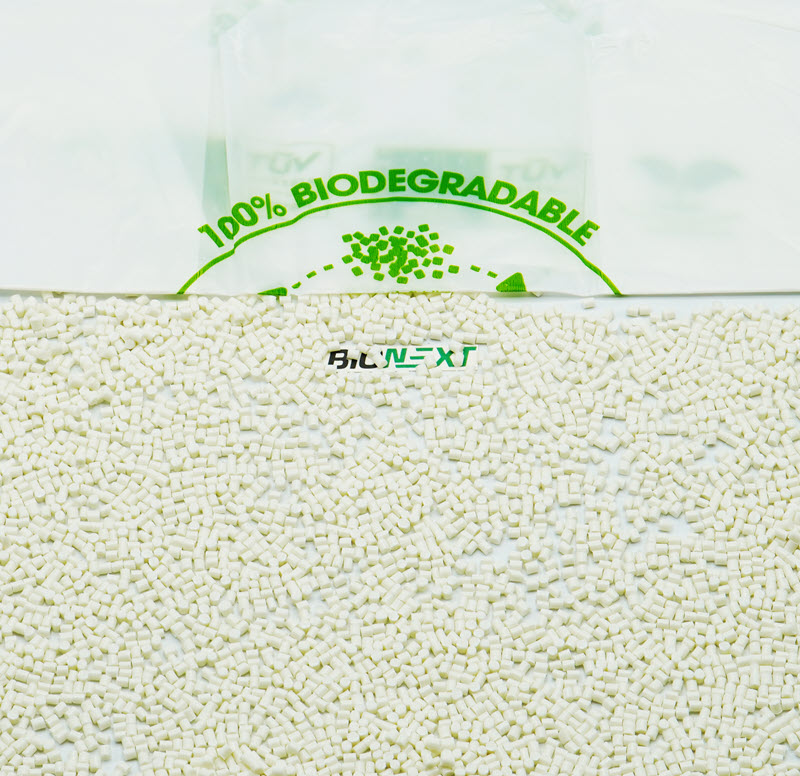The demand for sustainable alternatives to conventional plastics has grown as the world becomes more environmentally conscious. Biopolymers and bioplastics are two terms that are frequently used interchangeably in this context, but they are not the same thing. So, what distinguishes biopolymers, biopolymer plastic, and bioplastics? Let's take a closer look.
Read more: What are bioplastics made from? Materials to make bioplastics

1. What is biopolymer plastic?
Polymers are chemical substances that are used to create various forms of plastic. Polymers are made up of tiny molecules known as monomers that are arranged into more giant structures. This process is known as polymerization. It operates by linking monomers together to produce chain links or three-dimensional networks. This process may be replicated intentionally in a laboratory using chemicals, but it also occurs spontaneously in nature.
Nowadays, biopolymers are gaining popularity as more environmentally friendly alternatives to synthetic polymers. Biopolymers plastic, or so-called bioplastics, are plastics that are biobased or biodegradable. These chemicals contain biodegradable functional groups such as acetal, silyl ether, and ketone.

Biopolymer plastic can be made from natural resources such as coffee grounds, starch, coconut shell, and regular PP/PE. Unlike traditional plastics, which are derived from non-renewable fossil fuels, biopolymer plastic is considered to be more sustainable and environmentally friendly.
One of the critical advantages of biopolymer plastics is that they can be biodegradable or recycled. This makes them an attractive option for various applications, such as food packaging, agricultural films, and disposable products.
The following are the main characteristics of biopolymer plastic pellets:
- High tensile strength
- High impact resistance, durability, and flexibility
- High-temperature tolerance (100-300 degrees Celsius)
- Low melt flow index
- Consistent manufacturing capability
- Appropriate for the manufacture of items that have direct contact with food.
However, it is essential to note that not all biopolymer plastics are created equal. Some biopolymers may require specific conditions, such as high temperatures or certain microbes, in order to biodegrade appropriately. Additionally, the production of biopolymer plastics may still have environmental impacts, such as land use or water usage.
2. What is the difference between biopolymers and bioplastics?
The term "biopolymers'' refers to all polymers found in living creatures, such as cellulose in wood, silkworm silk, and mammalian collagen. Synthetic biopolymers can also be made to mimic natural biopolymers. Petroleum products are not used to make natural or synthetic biopolymers.
Bioplastics, or biopolymer plastic, are a subset of biopolymers, which means that all bioplastics are biopolymers but not all biopolymers are bioplastics. While "bioplastics" is frequently used for sustainable plastics, it does not necessarily signify the same thing. For instance, PLA is a bioplastic and a biopolymer, while silk can be classed as a biopolymer but not a bioplastic.

3. Types of biopolymer plastic
There are several types of biopolymer plastics, each with unique properties and characteristics. The three main classes of biopolymers differ in their source and production method, as well as their properties and applications.
3.1. Biomass-derived polymers
Biomass biopolymers are obtained directly from biomass, including starch, cellulose, proteins, amino acids, and their derivatives. They are usually biodegradable and have a low environmental impact, but their properties can be inferior to those of oil-based plastics.
As a result, they are often used with reinforcing fillers or impact modifiers to improve their properties. Some typical applications of these biopolymers include packaging materials, agricultural films, and coatings.

3.2. Bio-synthesized polymers
This type of biopolymer is bio-synthesized using microorganisms and plants or prepared directly from bio-synthesized monomers, such as polyhydroxyalkanoates (PHAs) and polylactic acid (PLA). They are also biodegradable and can be used similarly to biomass biopolymers. However, they have better mechanical properties and are more versatile, making them suitable for various applications, including biomedical implants and drug delivery systems.
3.3. Oil-based polymers made from bio-sourced monomers
Oil-based polymer plastics can be made from alternative bio-sourced monomers, such as polyethylene and polyethylene terephthalate (PET). They are structurally similar to oil-based plastics and have identical properties, but are mostly not biodegradable and have the exact disposal and recycling issues as oil-based plastics.
However, they can still be considered a more sustainable alternative to traditional oil-based plastics, as they are made from renewable resources and have a lower carbon footprint. Some typical applications of these biopolymers include food packaging, beverage containers, and automotive parts.
4. Applications of biopolymers plastic
Commercial bioplastics have mainly been employed in packaging. Because of their lower prices, starch and PLA are the most commonly made bioplastics. PHAs, on the other hand, have substantial production costs and are consequently produced in considerably smaller numbers.
Below are some applications of the most common biopolymers plastic:
- Starch and blends polymers: Flexible packaging, consumer goods, agriculture
- PLA: Flexible and rigid packaging, consumer goods
- PHA: Flexible and rigid packaging
- PET: Rigid packaging
- PBAT (Polybutylene adipate terephthalate): Flexible and rigid packaging, agriculture
- PBS (Polybutylene succinate): Flexible packaging, agriculture

5. Common misconceptions of biopolymers plastic
Public perception regarding biopolymers holds significant importance in promoting their widespread usage. Biopolymer plastic has been subjected to a critical evaluation. Here is some explanation for the most common misconceptions of biopolymers plastic:
- All biopolymer plastics are biodegradable: Not all biopolymer plastics are biodegradable. The structure of a polymer determines whether it is biodegradable. Most biomass and bio-synthesized polymers have high biodegradability, while only a few oil-based plastics made from bio-resources do.
- Bioplastics do not break down quickly enough under normal circumstances and typically require composting facilities for proper disposal: Biodegradability of all biopolymers can vary significantly between different types. For instance, PHAs degrade relatively quickly in natural conditions, while PLA and PBAT require high temperatures in industrial composting facilities. Additionally, if a plastic product degrades too quickly, it can compromise its usefulness.
- Bioplastics are only suitable for packaging applications: Applications for biopolymers have become increasingly diversified in recent years, mainly due to advancements in the development of bio-based polymers.
6. EuroPlas bioplastics - The top choice for businesses
BiONext, a bio compound exclusively developed by EuroPlas, can decompose within a year after usage. EuroPlas assures that the final product undergoes strict quality control management to satisfy all requirements. BiONext has several functions that make it stand out from other materials, including:
- Fully biodegradable: Biodegrade entirely within 12 months after being used
- Exceptional mechanical properties: Strong and durable
- An all-in-one material: It can perform all the necessary functions required of it without the need for additional components
- Customized material: BiONext is customizable based on the requirements of the end product it is used for.

The application of BiONext covers several areas including electronics, automotive and transportation, household appliances, construction, fibers, and, most notably, food packaging. Moreover, they are frequently used to produce food containers, salad bowls, plates, and disposable cutlery.
Contact us for more information on BiONext bioplastic compounds.